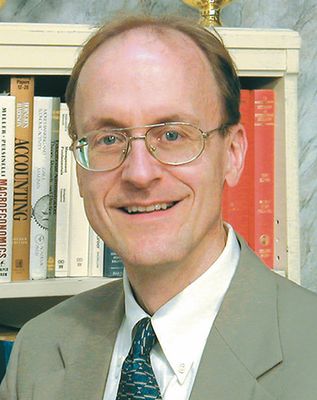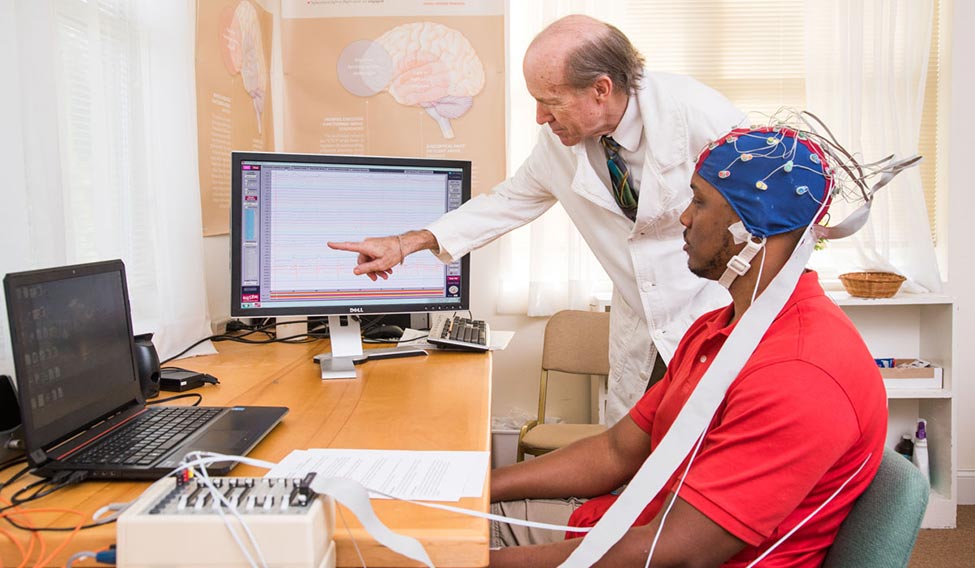The American midwest isn’t best known for having any great commitment to Veda or ayurveda.
However, the state of Iowa is home to a unique city. Just outside the town of Fairfield lies Maharishi Vedic City, a community that didn’t even exist 20 years ago, but has woven Veda into the very fabric of daily life.
How could a place like Maharishi Vedic City emerge within the cornfields and cattle ranches of the midwest? Well, most people credit the late Maharishi Mahesh Yogi, who introduced the Transcendental Meditation (TM) technique to millions of people around the world.
In addition, he spread the ‘science of consciousness’, a holistic approach to scientific discovery based upon Natural Law, as well as Vedic approaches to education, architecture, farming, etc.
In 1974, the Maharishi found himself in need of a larger premises for a university he had set up the previous year in California. So great was the demand for the courses offered at Maharishi International University that, after just 12 months, he simply had to find more suitable digs. He found what he needed in Fairfield, Iowa.
Now known as Maharishi University of Management (MUM), it aims at providing a type of learning its proponents perceive to be absent in other traditional educational institutions. That is, the development of a student’s intellect, both internally and externally. “The prevailing model of education in the world today only allows students with opportunities to gain knowledge outside of themselves,” explains Craig Pearson, executive vice president of MUM.
“Conventional educational methods fail to foster and develop the stunted potential that lies within us all,” says Pearson. While MUM still recognises the importance of lectures, assignments and various other traditional educational experiences, these pedagogic tools are complemented by TM and various other Vedic teaching approaches.
“That’s what MUM was founded upon,” Pearson stresses. “We teach the kinds of courses you’ll find in any innovative school—business, art, sustainable living, media, health, physiology, etc. What’s different here, though, is that students and faculty must also develop their innate inner potential at the same time as gaining outer knowledge.”
Reaching one’s inner potential is attained through the daily practice of TM. “Students, faculty, academic staff as well as several thousand people who happen to live nearby all come together each day to meditate for 20 minutes in the morning and again in the late afternoon,” he says.
TM is now widely recognised by the scientific community for being beneficial in ways beyond its spiritual and philosophical elements. Several empirical studies support claims that TM profoundly improves brain function.
Frederick Travis is the director of the Center for Brain, Consciousness and Cognition at the Maharishi Vedic Science Department and has spent a large part of his career studying the cognitive benefits of TM from a scientific perspective. In the book Your Brain is a River Not a Rock, published in 2012, he explained how a growing body of scientific evidence showed the cognitive benefits associated with TM. “Modern science has validated the benefits of developing inner subjectivity through meditation practices such as TM,” he says.
 Vibrations of positive change: Group chanting by pundits who come to live in Iowa on a year’s visa.
Vibrations of positive change: Group chanting by pundits who come to live in Iowa on a year’s visa.
The routine practice of TM is part of daily life for the inhabitants of nearby Maharishi Vedic City, too. Vedic City lies two miles north of MUM.
Founded in 2001 by a group of TM practitioners, many of whom originally moved to the locality in order to be near the university, Vedic City is much more than just a TM-focused community. Inhabitants have applied Maharishi’s Vedic teachings wherever they could, informing everything from the city’s architectural design, to health care and even food standards.
Every building follows Maharishi Sthapatya Veda design principles. Believed to promote health, happiness and good fortune, each building faces east towards the rising sun, which is considered the most powerful influence on natural life.
In addition, complex mathematical principles must be used in determining the proportions and layout of any new structure. “The kitchen will always be located in the north-east corner of a building,” one local resident told THE WEEK. “According to the ancient traditions of Vedic knowledge, this was considered the optimum location for cooking as well as digestion.”
City planners were originally inspired to base the city layout on Vedic spiritual symbols or mandalas. Comprised of ten in all, each mandala is like a district with its own specific theme—one for education, another for health and so on. Director David Lynch chose Vedic City as the location to establish The David Lynch Film School, which offers programmes dedicated to ‘Consciousness-based film education.’ The Film School is affiliated with MUM in Fairfield but is located within one of Vedic City’s mandalas.
 Craig Pearson
Craig Pearson
City officials have banned the sale of all non-organic food inside city walls and have begun the construction of huge greenhouses that will be used by Maharishi Vedic City Organic Farms, an operation already providing organic food locally as well as to nearby towns and cities.
One of the biggest tourist attractions in the city is the Raj, a health centre and spa based on prevention-oriented ayurveda. Famous visitors to the Raj include rights activist and actor Bianca Jagger and The Beach Boys’ Mike Love. They come to de-stress through ayurveda, a TM-based suite of treatments including vegetarian meals, exercise, holistic medicine, massage, hot oil and herbal enemas.
While the number of tourists coming to sample life in this unique community has grown significantly since 2001, the city’s residents are far more accustomed to visitors of a different kind. Vedic monks or pundits have been coming from India to Vedic City since 2006. They were originally housed on MUM campus, but subsequently moved to Vedic City, where a special campus was built for them.
“They are invited by the city to come and practise Vedic duties, many of whom stay for up to a year,” explains Bill Goldstein, Vedic City Council member and MUM’s legal counsel. “Vedic chantings go on for several hours and the public are welcome to come and watch. The chanting of certain sections of Vedic literature is believed to have varying effects on the environment depending on vibration levels created by the pundit’s voice. “Many have a calming effect: Vedic chanting is known for its harmonising influence on the environment, which America needs more of right now,” says Goldstein.
Physical reminders of the Maharishi’s significant legacy are everywhere in Vedic City but none more so than the Peace Palace. Several Peace Palaces were built across the US during his lifetime. The Peace Palace in Vedic City is primarily used for administrative purposes now, but at the Peace Palace in Fairfield they run TM courses, open to everyone, regardless of experience levels. Oprah Winfrey famously visited Fairfield in order to attend TM training.
“The idea behind Peace Palaces was to build physical structures where peace could germinate,” explains Wally DeVasier, director of the Peace Palace in Fairfield. “If you want a green forest, you need to plant green trees,” he says. “If you want a peaceful world, you need peaceful people. So these buildings are meant to help reduce the tension and stress felt by so many in their own lives. They are frequently used as centres for TM but very often provide a space for those encouraging any other peaceful activities, too.”
 Making waves: Dr Frederick Travis studying beta waves of a TM practitioner’s brain.
Making waves: Dr Frederick Travis studying beta waves of a TM practitioner’s brain.
Vedic City, as well as Fairfield, may seem pretty alien when compared with most American towns and cities. But the people who live there still live life much like anywhere else.
“We have bars and coffee shops, listen to live music and enjoy sports just like everybody else,” explains Robert Schneider, dean and director of the College of Integrative Medicine and Institute for Natural Medicine and Prevention at MUM. “Life is fairly normal except people take better care of themselves here. They don’t get as stressed or suffer as much from problems like exhaustion.”
Schneider is quick to highlight the important role Indian cultural influences have played in the development of Vedic City.
Given the Maharishi’s Indian heritage and the central place he holds in the hearts and minds of people living in Vedic City, Schneider and so many others like him have great respect for various aspects of Indian culture and heritage, something he believes isn’t necessarily the case among Indians themselves. “I have travelled to India many times to give lectures and provide training to new doctors,” he says. “What I have found is that many Indians have a tendency to underestimate the value of their own heritage, looking instead to the west for the latest advancements in commerce and science. But there is so much valuable knowledge developed over thousands of years to be gained right under your noses. This should never be forgotten.”






